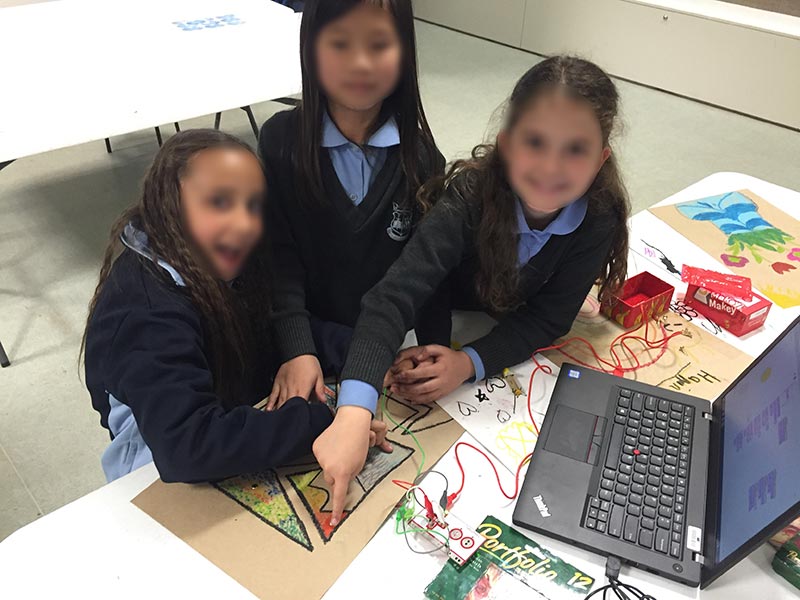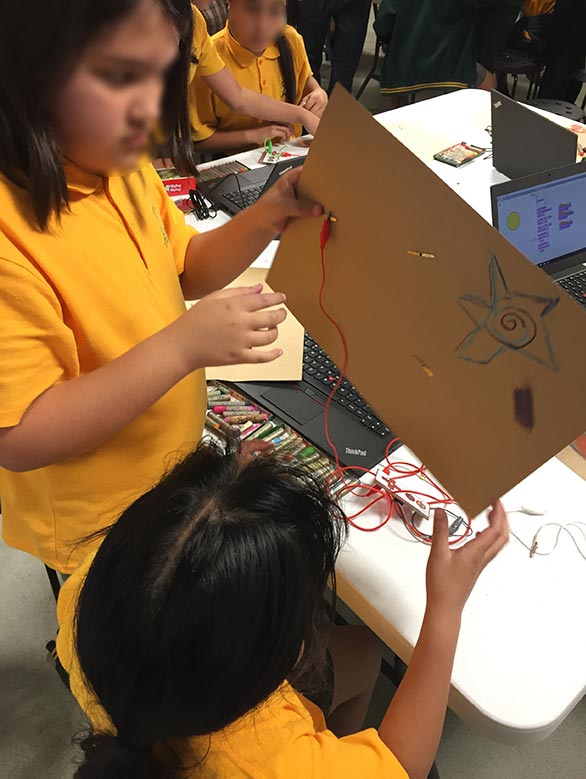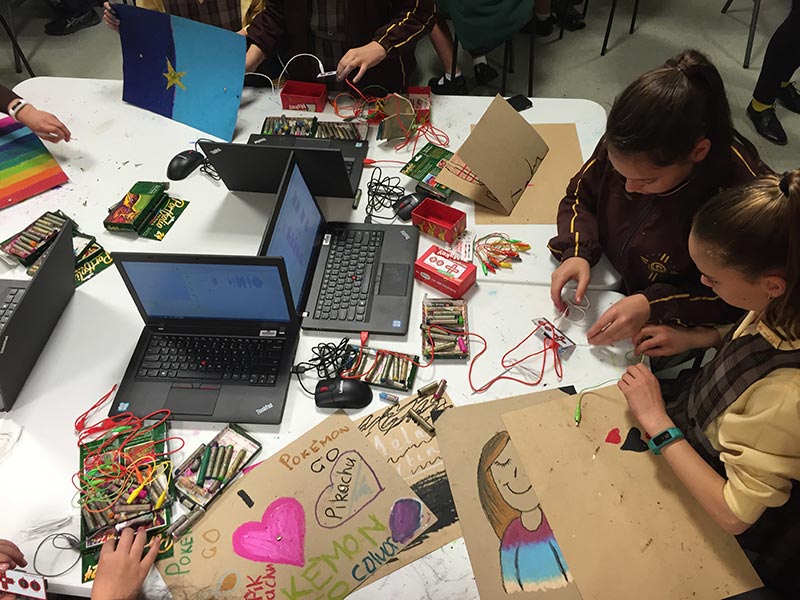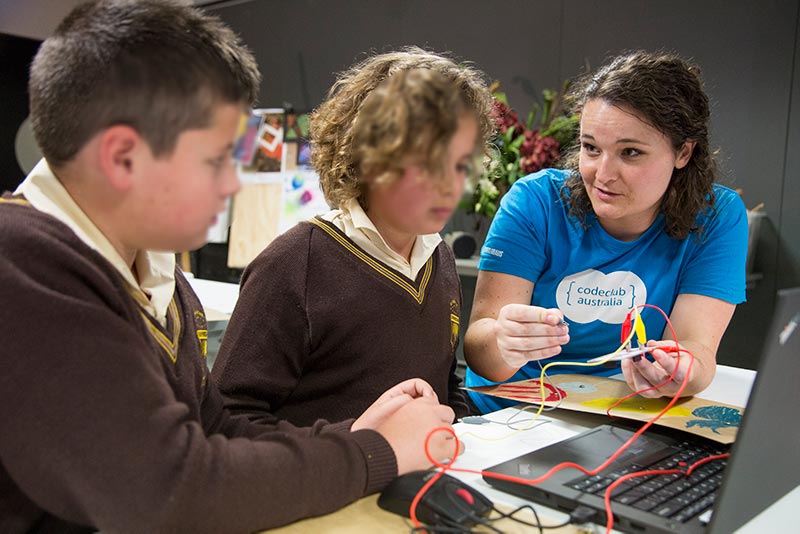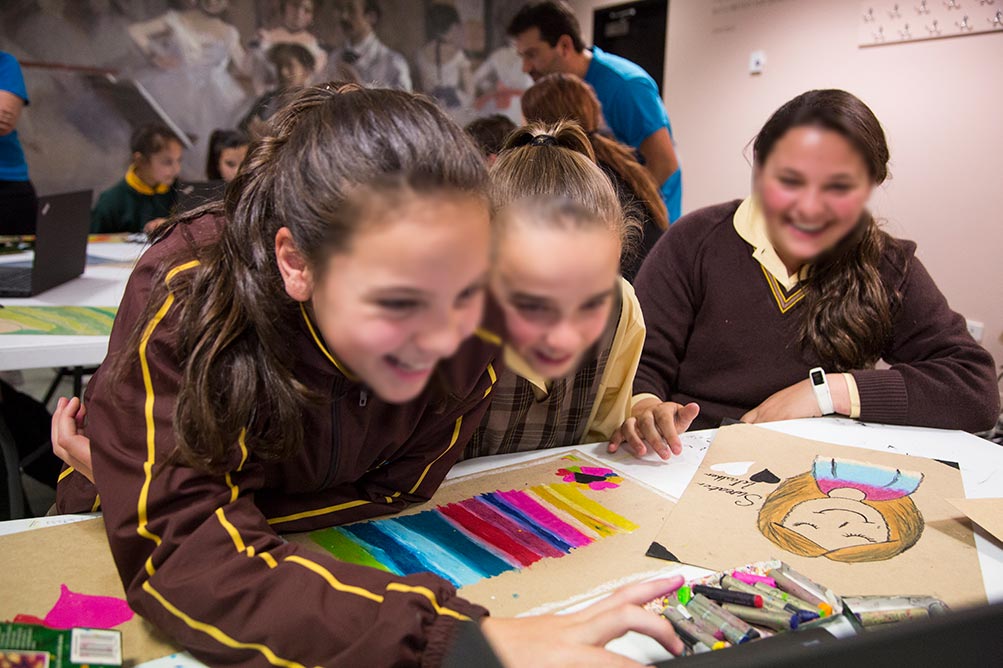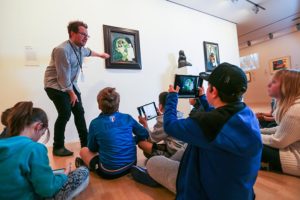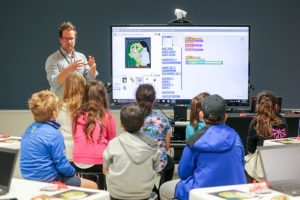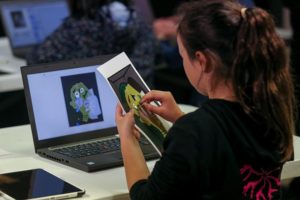National Gallery of Victoria and Code Club Pilot STEM Class
Integrating art and computer programming for kids
Project Overview
- Client: National Gallery of Victoria, Melbourne
In collaboration with the NGV art gallery and Code Club, I developed a concept class to introduce kids to art and STEM by making their own interactive art using computer coding and oil pastels. The class has become part of the NGV’s kids program.
My Role
- Originator of the concept
- Developed the computer programming and interactive art component of the class.
- The NGV ran the art lesson that occurred before the kids started making their own art.
Collaborative Conception
My UX consultancy practice shared floorspace with a couple of startups. One of these startups was Code Club Australia – a not-for-profit with a mission to introduce kids to STEM and computer coding. During casual conversations over lunch, I conceived of an idea to develop an interactive class that connected physical art with coding.
Code Club was looking for ways to get involved with the National Gallery of Victoria (NGV), so we all got together to further develop the idea to integrate computer coding with art education.
The idea became a pilot class at the NGV and was adapted into their official educational kids’ program.
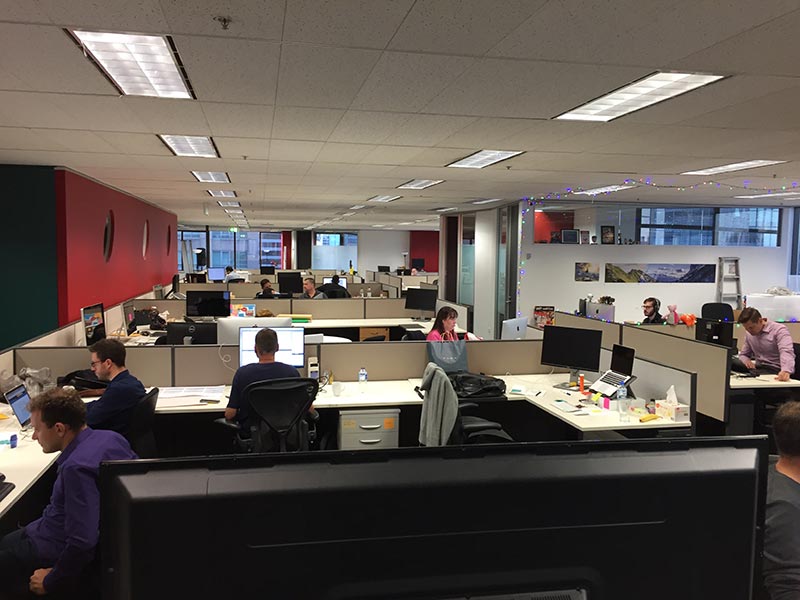
Art Lesson
The NGV ran the first part of the class where kids were shown famous works of art in the gallery. They discussed colour, mood and other modes of expression through the art medium.
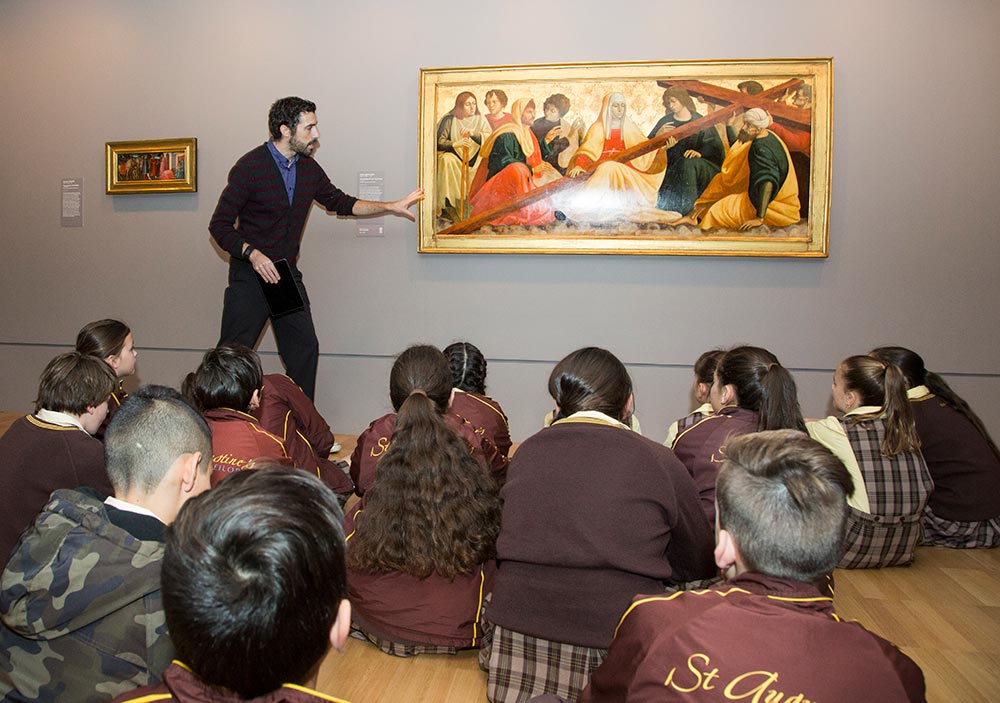
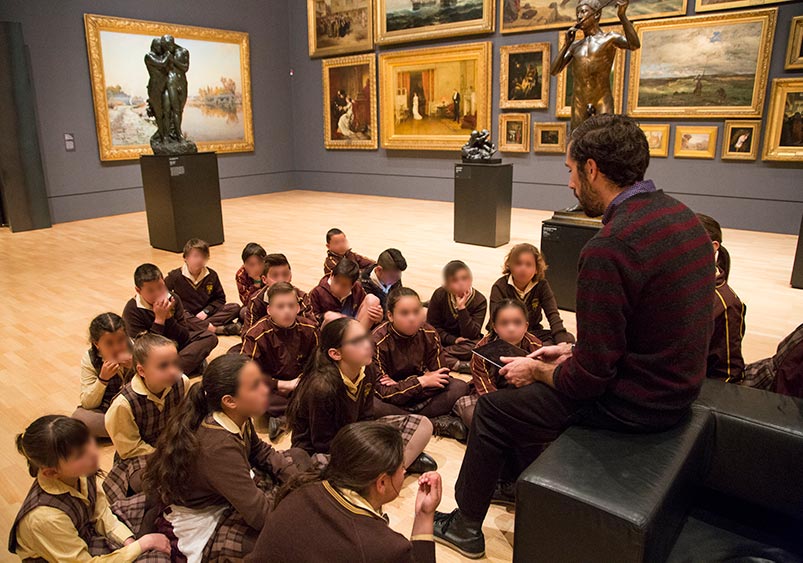
Interactive Art Lesson
Once kids were finished with the component of their lesson on the gallery floor, they were shown into a workshop where they applied what they learned by drawing their own pictures with oil pastels.
Then, I delivered a lesson where they could further explore expressing themselves by transforming their oil pastel pictures into interactive art through the use of computer programming and digital music files.
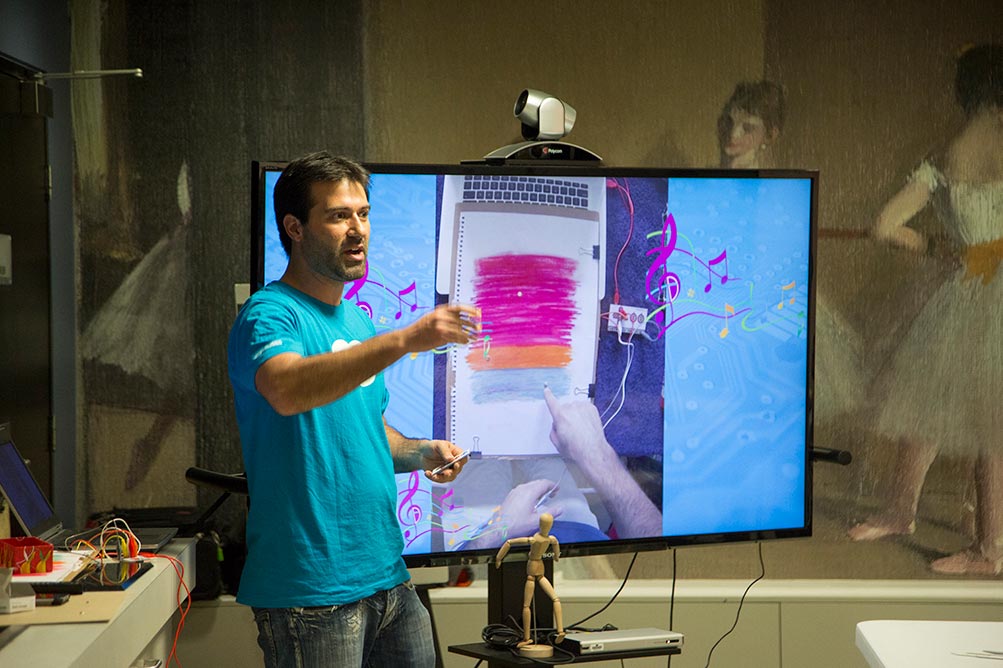
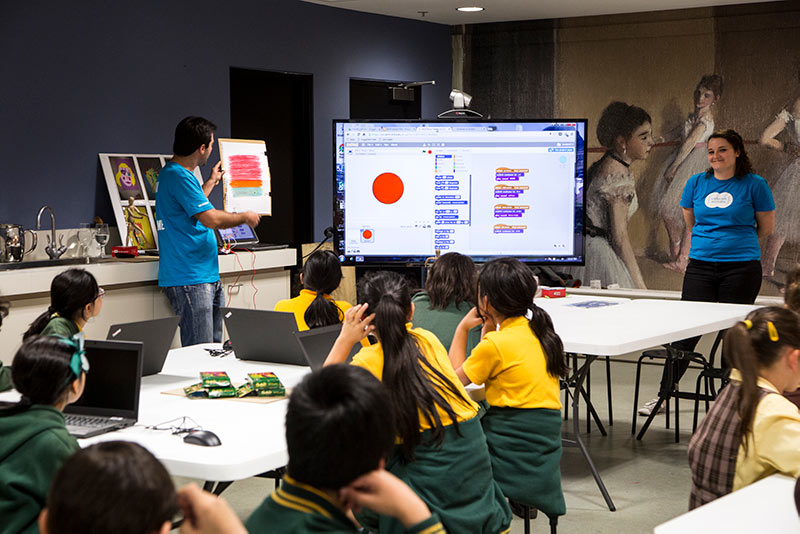
The basics of computer programming
I led kids through a lesson using a program called Scratch to teach them the basics of computer programming. The kids learned how to associate a colour with the laptop’s arrow keys.
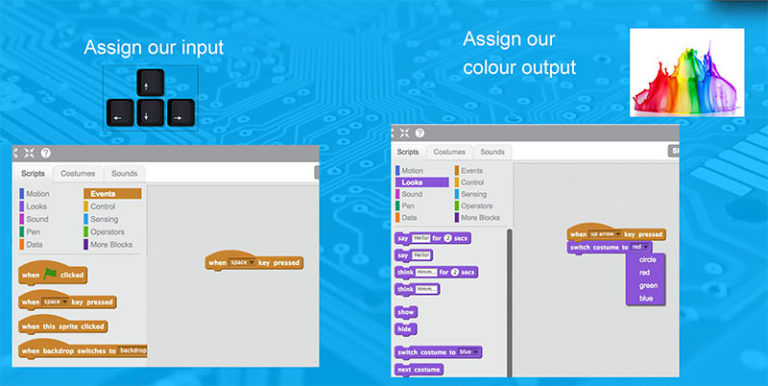
Making code interactive
Once the kids had their code, I introduced them to a Makey Makey, a device that makes physical elements interactive using electrical current and computer code.
I gave a simple explanation of circuits, and showed them how to link their computer code to the colours in their artworks using the Makey Makey and ‘interactive buttons’ embedded in their drawings.
Once we linked their artworks to the computer code, we associated music to each one of their colours they had programmed. Their final art piece became a musical instrument of sound and colour!
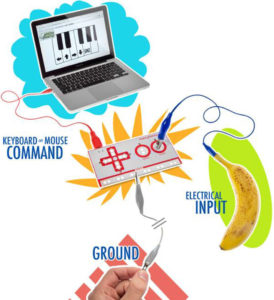
Workshop Steps
- The kids drew their art with oil pastels and created their computer code.
- We used metal paper fasteners as ‘buttons’ to create electrically conductive areas in their artworks.
- We linked the Makey Makey to the buttons in the art.
- We updated the code to be associated with the interactive buttons we created.
- The kids associated music with their buttons and code.

The kids chose from a library of music to integrate into their artwork. The remainder of the class was left to making music with the artworks they created.

Official Class in the NGV's Kids Program
The pilot classes were a huge success and showcased an innovative way to educate kids about computer programming and traditional art. The oil pastels were messy, so in order to efficiently and consistently deliver the class, the NGV decided that they would provide ready-made pictures for children to use in the workshop. The decision also helped create a stronger connection between what the kids learned on the gallery floor and what they applied in the workshop.
Youtube Lesson Plan Explanation
This video walks through all of the steps in the lesson I delivered.


